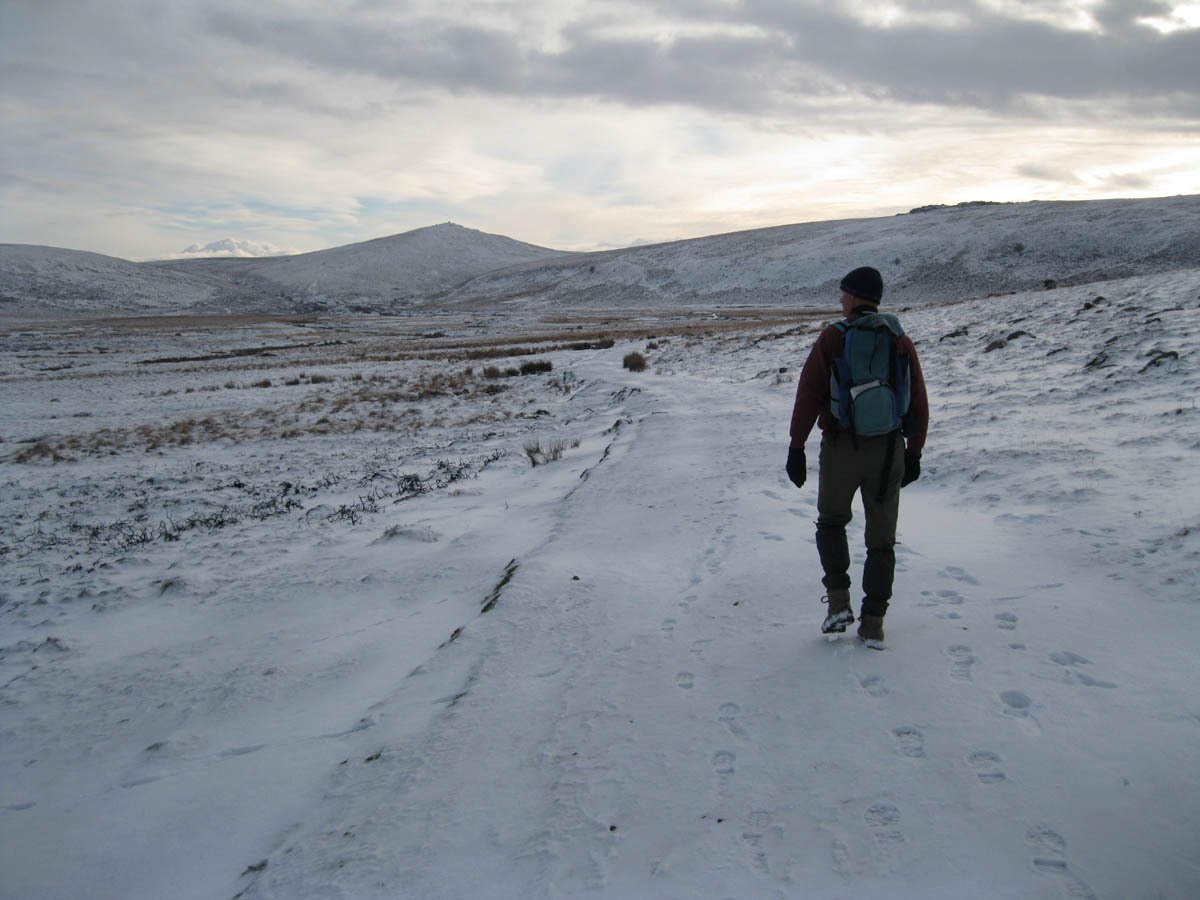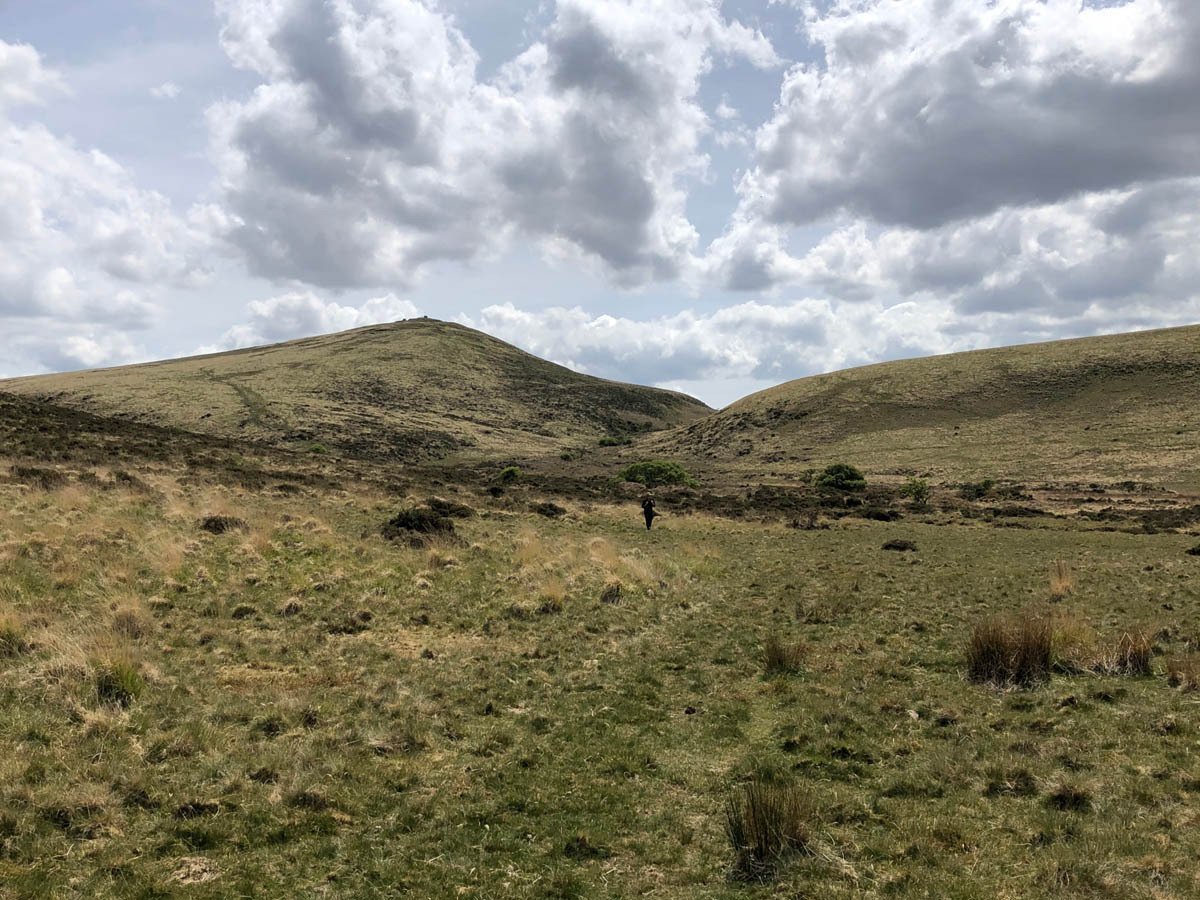
Swapping scouse for pasties, misguidedly dissing Dartmoor and a stroll up the Cowsic.
When I was 28 work took me from Merseyside to Cornwall: I traded a lively metropolis with easy access to the mountains of Wales and the north west, for the dramatic, breathtakingly-beautiful coastal scenery and pristine sandy beaches of the West Country. It was a long way from my beloved Lake District, but there proved to be real compensations.
After cutting my hill-walking teeth in the Lake District, I initially considered Dartmoor very tame by comparison. Being a stubborn sort, it took me a long while to acknowledge this silly error of judgement. At every opportunity I’d harp on endlessly about how Dartmoor was so inferior to the Lakes. But eventually I realised that I was being very harsh, if not a little stupid – the two national parks are just different, so much so that such daft comparisons are meaningless. I will always regard the Lakes as the best place in the world, but that doesn’t mean that Dartmoor isn’t special and I now appreciate that the features that differentiate it are not weaknesses, but rather represent some of its strengths.
I first set foot on the moor when a friend took me for a couple of walks up the desolate River Cowsic valley and along the exhilarating ridges enclosing it. A few miles north-west of Princetown, the area around this valley struck me as a genuine wilderness.
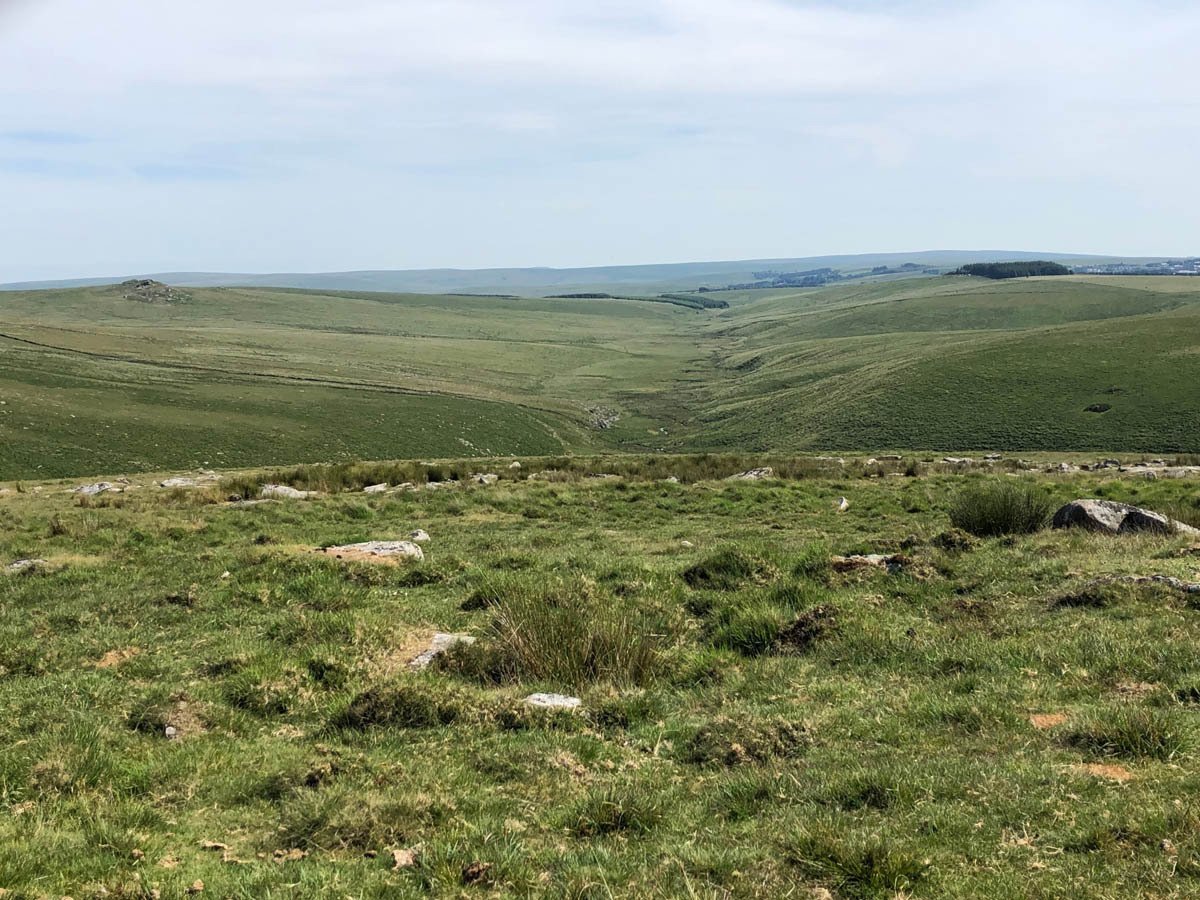
Anyone wishing to explore this peaceful valley will find a good spot to park the car at OS ref SX 591765, reached along a straight track that leaves the B3357 just west of Two Bridges. From here you can drop down to cross the river and follow a path which eventually joins the Lich Way for a while, before leaving it and heading north up the Cowsic towards the decidedly boggy Cowsic Head. The Lich Way is an old coffin route and makes a fine linear walk from Bellever to Lydford and is celebrated in a lovely, haunting song from Devon folk super-group, Show of Hands.
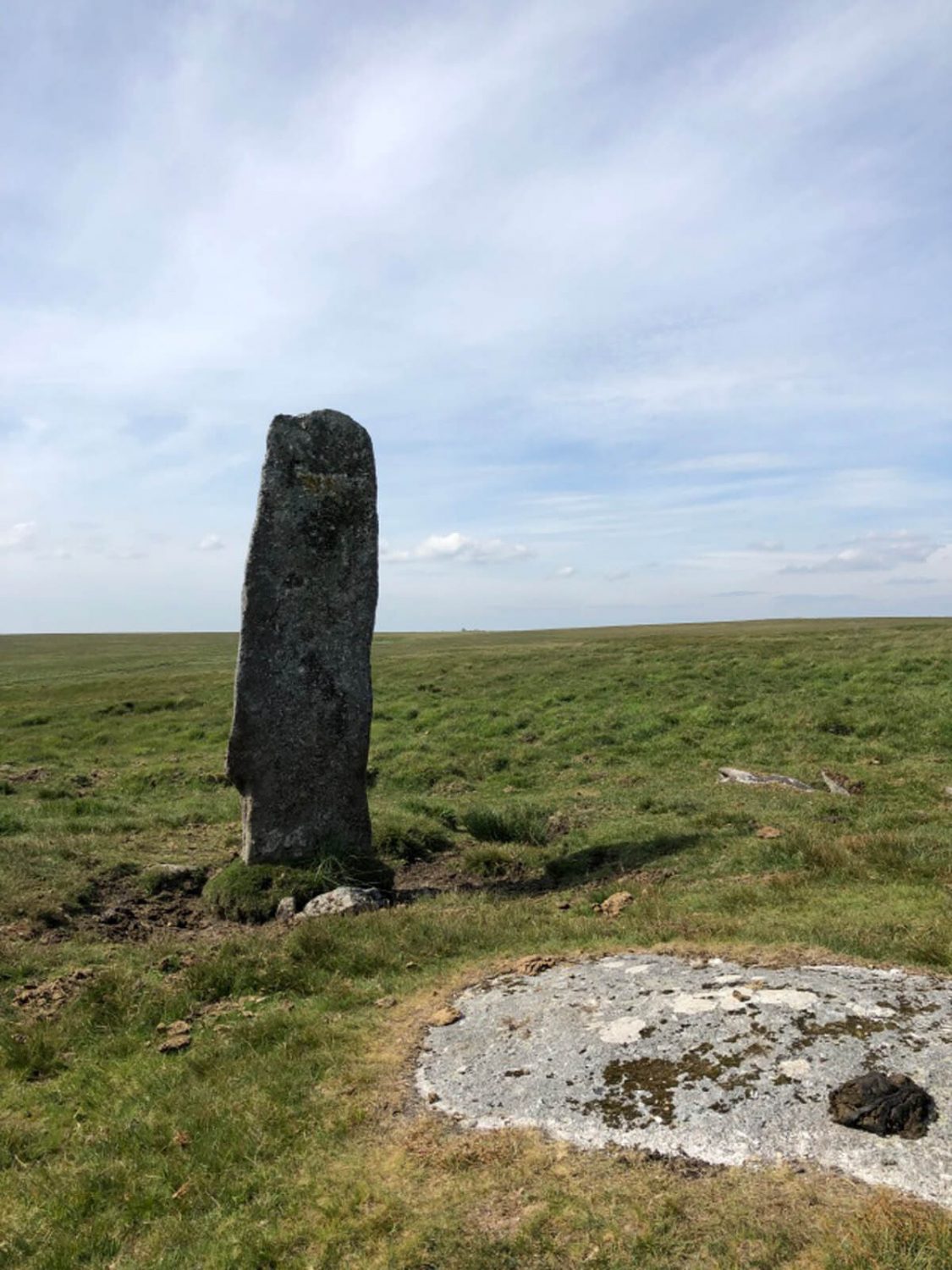
After passing the site of an ancient settlement and some hut circles I’d suggest turning right to head east before you get your feet wet and climb out of the valley to Devils Tor. Just before the Tor you can marvel at Beardown Man, a huge standing stone erected over 4,000 years ago. This old pillar of granite is a longstone or ‘menhir’, the second tallest standing stone on the moor and on the highest point. This modest 5.25m hike, involving 235m of climbing, is a splendid introduction to the moor and its spectacular scenery.
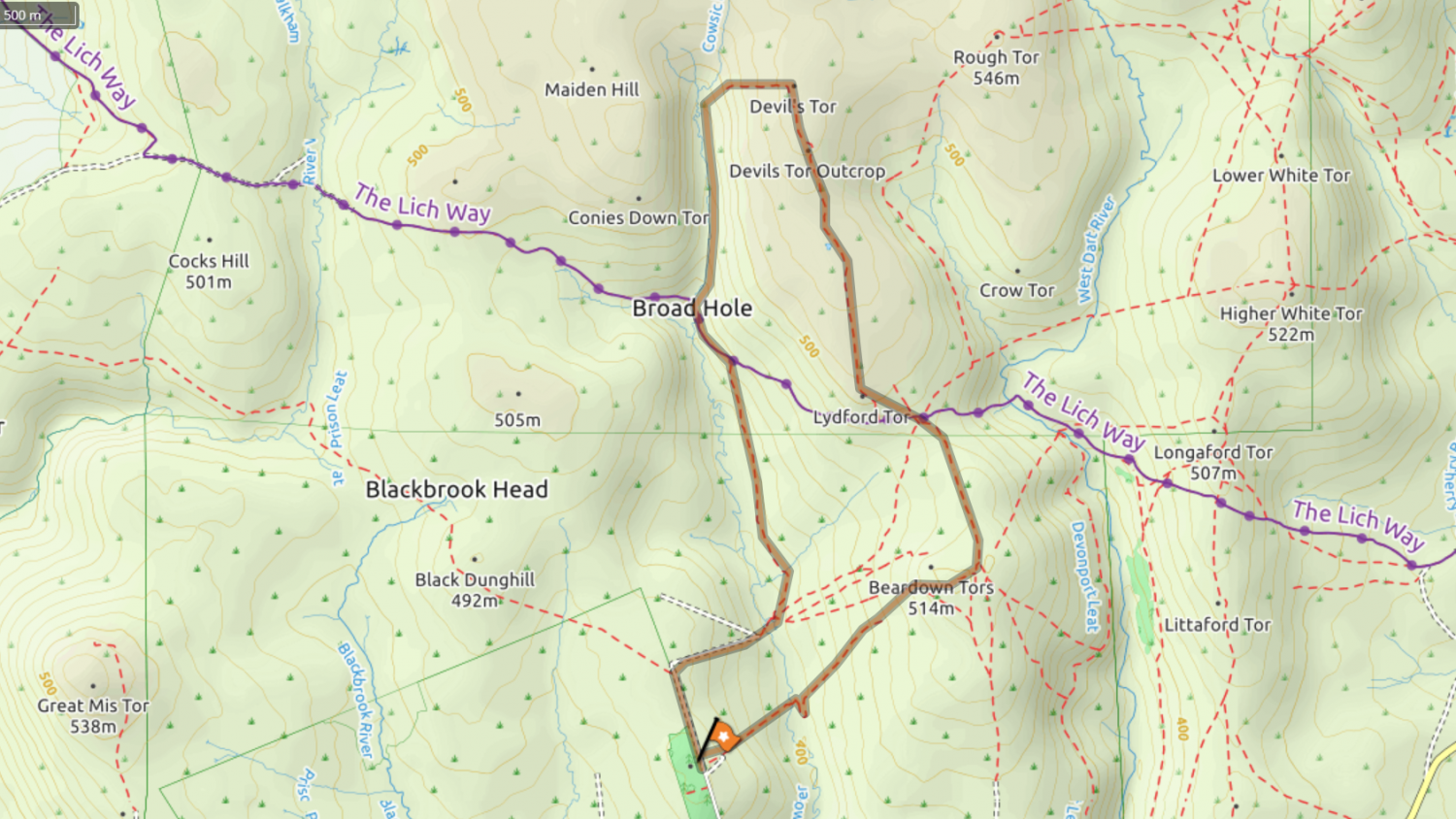
I visited the moor on a fairly regular basis after those first jaunts, the frequency of visits increasing dramatically after I crossed the border and moved to Dawlish, in Devon. I count myself lucky to now live 5 minutes walk away from the South West Coast Path and around 40 minutes drive from the majestic rocky scenery of Haytor.
The well-travelled 19th century Dartmoor resident, Anglican priest and prolific hymn writer, Sabine Baring-Gould, did not share my reservations and placed the moor at the top of his personal pecking (or perambulating?) order:
“I have wandered over Europe, have rambled to Iceland, climbed the Alps, been for some years lodged among the marshes of Essex – yet nothing that I have seen has quenched in me the longing after the fresh air, and love of the wild scenery, of Dartmoor.”
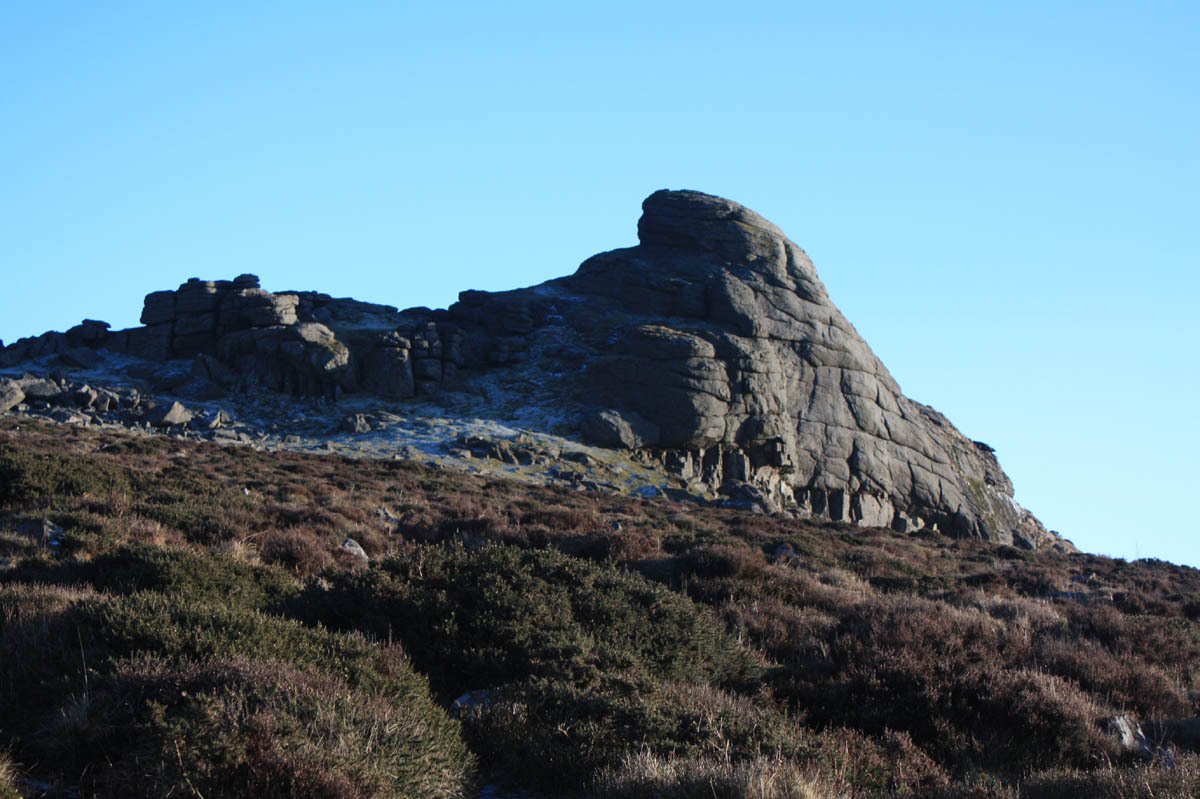
Sharing an ancient, lonely, wet, but special place with the military.
Dartmoor’s barren uplands are tremendously atmospheric and feel far more remote from roads or human settlements than they actually are. This is partly due to the dearth of other walkers (a refreshing change from the Lakes) but also because of its featureless terrain.
The wild desolation of the moor is embodied in its extensive areas of bog, which are so pervasive because of the combination of heavy rainfall and the fact that the layer of peat covering most of the higher ground absorbs the water quickly, but distributes it slowly. Happily, despite the efforts of Conan Doyle, misty, murky mires are not the defining feature of Dartmoor’s high places. A more attractive aspect is presented by the many tors and other granite outcrops, which have been weathered over the millennia to give us an endless variety of attractive, sculptured shapes that Henry Moore would be proud of.
Aside from the tors, the undulating terrain and lack of distinct features make Dartmoor the toughest place I’ve ever navigated – far harder than the Lake District, where the more prominent crags and other pointy bits provide helpful landmarks to aid navigation. Of course, a GPS and the ability to use it overcomes these difficulties and – after many years claiming to be a purist – I finally succumbed to temptation and invested in one. I confess that I do enjoy playing with it, although I still love the satisfaction of using map and compass to find my way about. Given the rough topography and challenging route finding, it’s perhaps not surprising that the military have annexed several areas of the moor for training exercises and live firing.
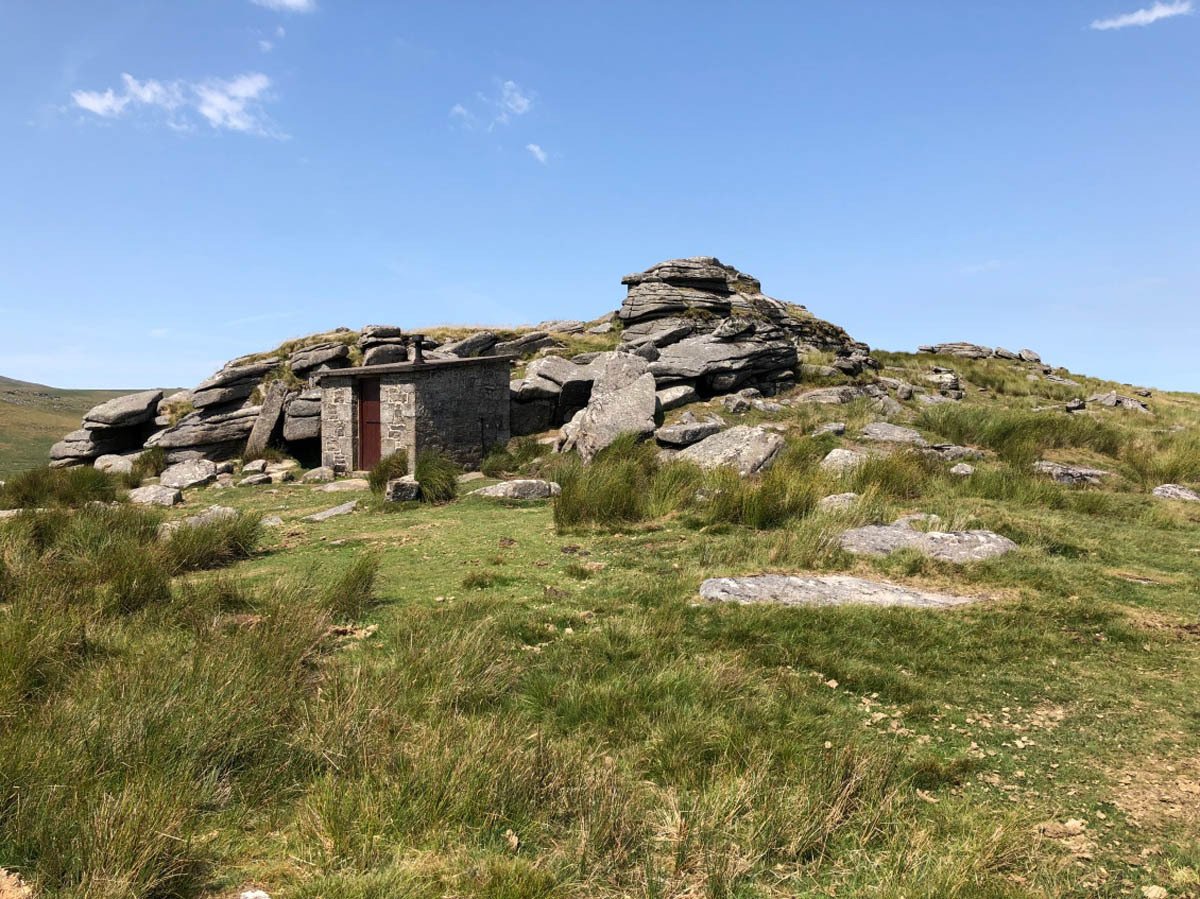
On Dartmoor there is a big army training camp near Okehampton and three firing ranges – Okehampton, Willsworthy and Merrivale – amounting to 11 per cent of the national park area, on which access is freely allowed apart from the periods when live firing is taking place. The army gets a lot of stick from moor lovers, but it seems to me to be doing a good job liaising with the public, and tries its best to minimise restrictions, particularly during weekends and school and public holidays. The presence of the army on Dartmoor is another difference from the Lakes where there is much less of a military presence on the ground, although the deafening daily fly-past of fast jets screeching overhead and frightening the sheep is a reminder that Lakeland is also a valuable training resource.
A glance at a map of Dartmoor reveals a plethora of ‘antiquities’, confirming that there is far more evidence of early man’s settlement on the moor than there is in the Lakes. The walker soon realises that the moor is well endowed with attractive and often mysterious standing stones, stone circles, cairns, and hut circles. Presumably this is due to the fact that Dartmoor was more accessible, and therefore more inviting, to early man than the rocky heights of Lakeland?
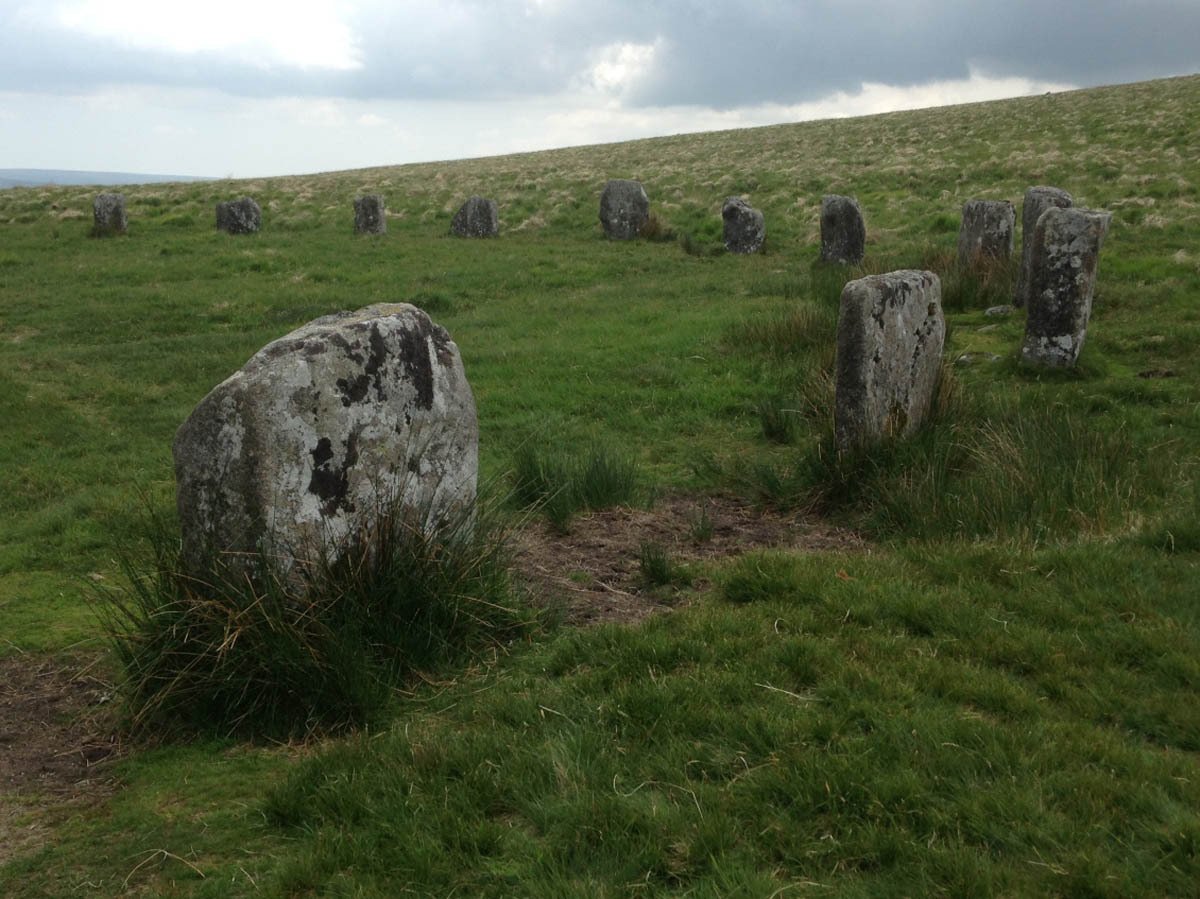
That said, it’s hard to fathom why anyone would want to live in some of the out-of-the-way spots where antiquities are found, until one considers that the valleys were full of impenetrable forests and wild animals in prehistoric times, so the higher places offered safety. In later periods, isolated settlements were created in the harsh moorland environment to accommodate those making what must have been a desperately tough living from tin mining, quarrying and wool; London Bridge, the British Museum and the National Gallery were all built with Haytor Granite. All of these testimonies to man’s endeavour add great interest to a moorland ramble.
Myths, legends and pubs.
While there are differences, there are also many shared characteristics between my two favourite national parks. To name but two: both are home to a slew of mysterious legends and both have a fine selection of pubs to slake your thirst after a long day on the hills. Myths and legends abound on Dartmoor, my own personal favourites being those surrounding Jay’s Grave and the Hairy Hands.
Kitty Jay was a young housemaid who took her own life after being wronged by her lover, who left her pregnant and destitute. As was the tradition in those cruel, unenlightened times, a person committing suicide could not be buried in consecrated ground and to prevent her spirit coming back to haunt those left behind she was buried at a crossroads. Now the ‘legendary’ bit: whatever the season there are always fresh flowers on her grave.
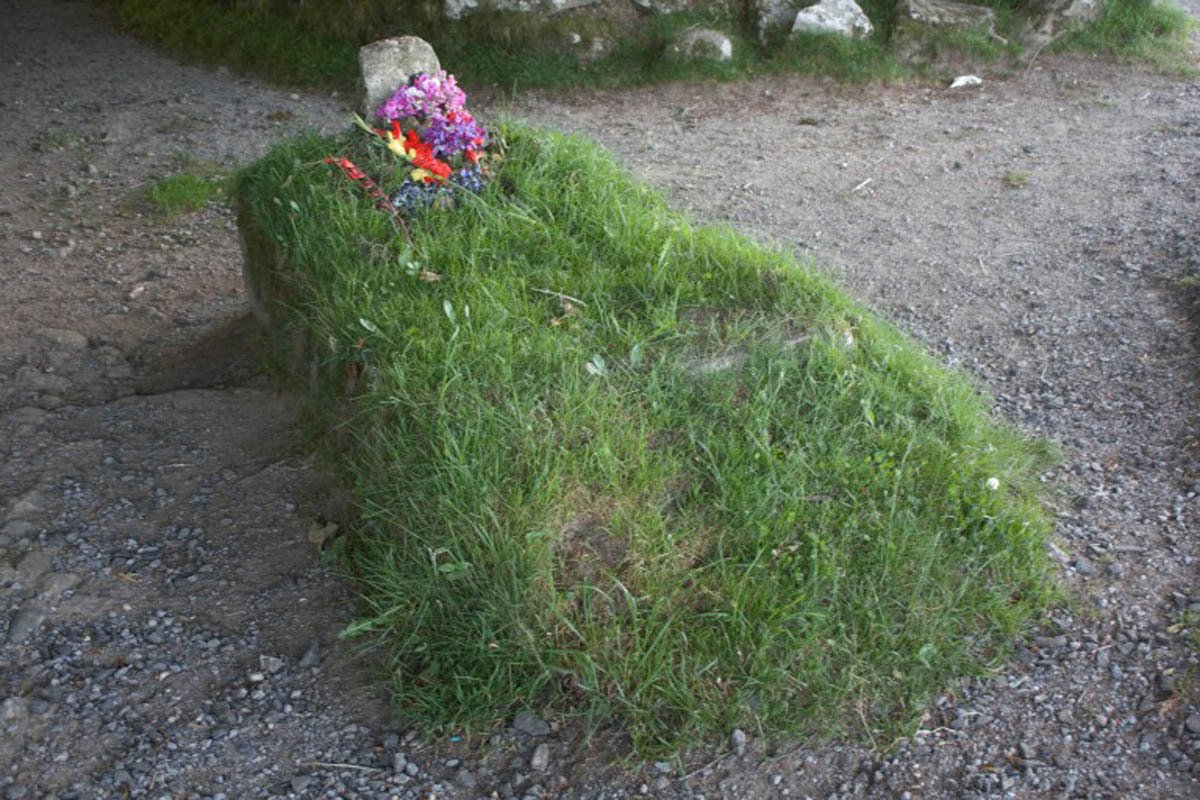
I have walked past Kitty’s grave many times and confirm that this is the case. As a faithless humanist with no belief in the supernatural I know there must be a rational explanation for this, but even if the explanation is less mythical and local people are going out of their way to respect the memory of this poor, unfortunate girl, it’s still a pretty special reflection of the better side of humanity. Kitty gave celebrated Dartmoor-based folk singer Seth Lakeman one of his greatest hits.
My other favourite legend concerns the Hairy Hands. Since the early 20th century there have been many reports of a pair of disembodied, often invisible, hairy hands which wrest control of a steering wheel or handlebars along a stretch of the B3212 near Postbridge, causing the traveller to lose control and sometimes career off the road. Scientists have come up with plausible explanations of the phenomenon, related to the camber of the road, but despite this an otherwise very sceptical friend of mine is unconvinced. Driving (sober) home to Tavistock one evening he insists he felt a very strong pull on the wheel and while refusing to believe it was a result of supernatural intervention, he admits to being shaken and is at a complete loss to explain it.
Another thing I love about Dartmoor are the many fine old pubs dotted across its landscape. My personal favourite three are:
- The Plume of Feathers;
- The Warren House Inn; and
- The Rugglestone Inn.
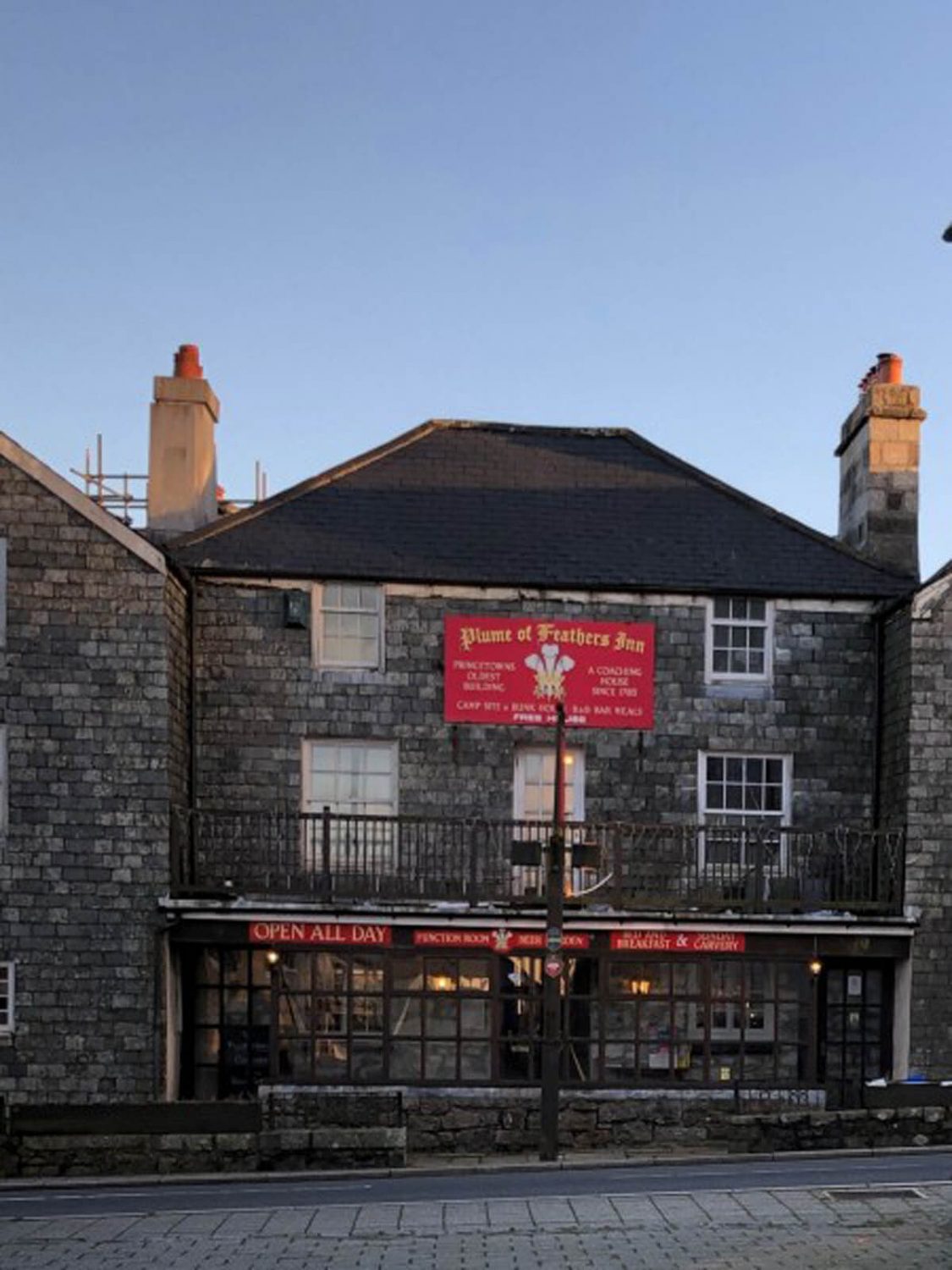
The Plume of Feathers, in Princetown, plays host to an eclectic mix of hikers, sight-seeing locals, holidaymakers, residents of the pub’s camp site and bunk house and off-duty warders from the grey, monolithic prison that dominates the small town. At the time of writing, July 2021, I have just heard the sad news that this fine pub will be closed indefinitely, another victim of the pandemic. I hope new owners can be found who will manage to revive this once thriving Dartmoor institution.
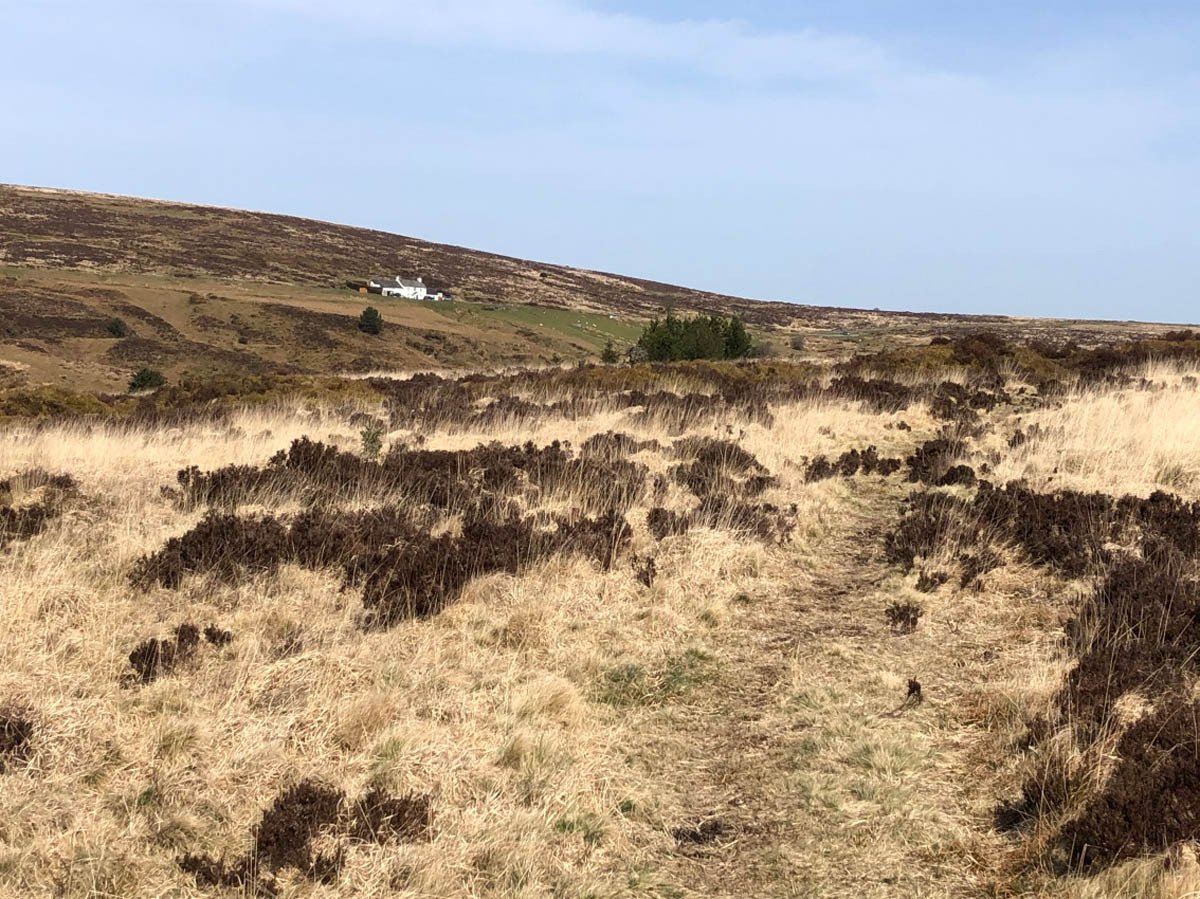
The Warren House Inn, owned by the Duchy of Cornwall, is on the B3212 near Postbridge close to where the Hairy Hands terrorise unwary travellers and, perhaps, provides a possible explanation for some of the reports. This pub enjoys a fine remote setting and is said to be the highest in southern England. It was once at the centre of a large, thriving tin-mining community, as the many interesting old black and white photos in the bar testify. The pub has its own legend in that it is said that the fire has burned continuously in the grate since 1845. My exhaustive and selfless research in all four seasons can vouch that this does appear to be the case.
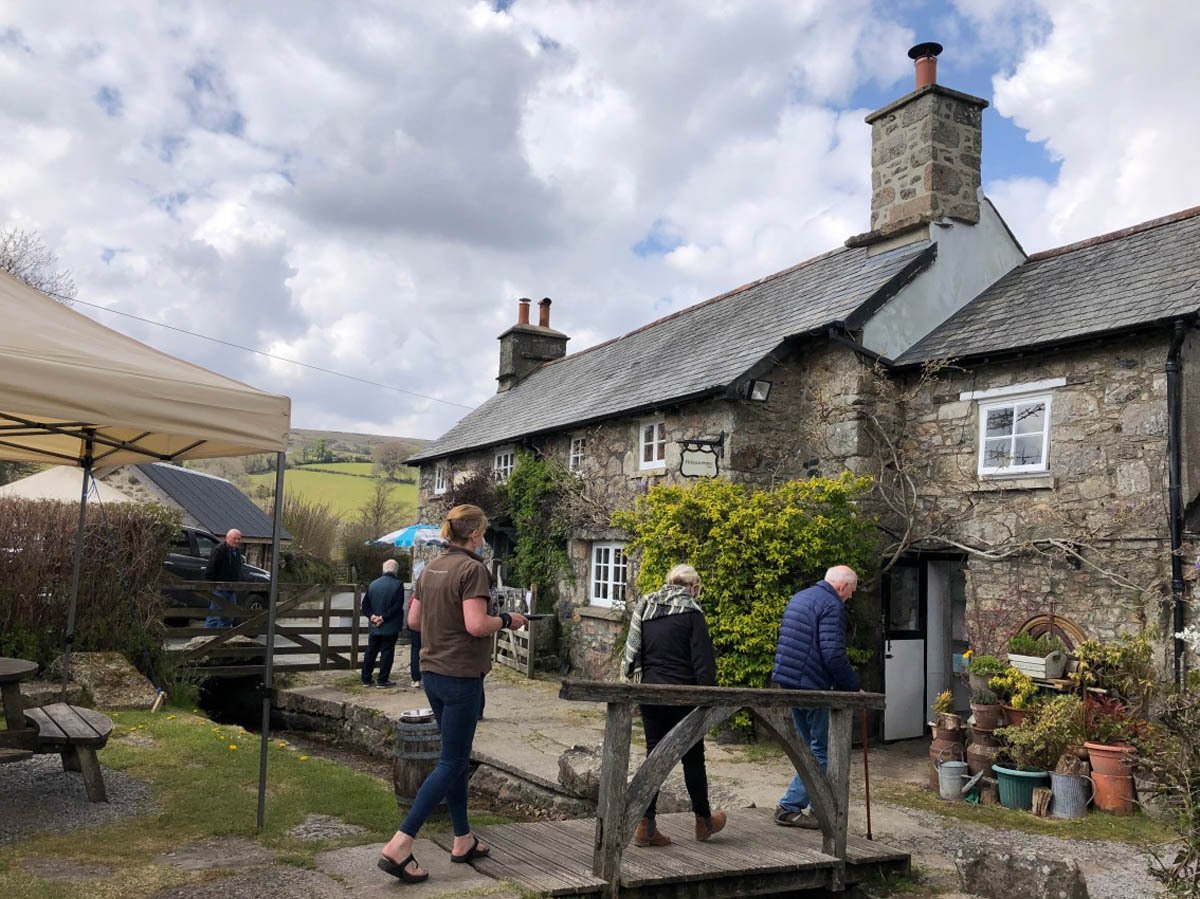
Finally, The Rugglestone Inn, Widecombe, is one of two grand pubs on Tom Pearce’s manor: the Old Inn being the other. It is a traditional, stone-floored hostelry with local beers and ciders from the barrel and a lovely big garden. A peaceful, secluded place for quiet reflection after a hard day’s walking.
Going to extremes and manoeuvres in the dark.
Another similarity between the two national parks is that they both provide demanding, long- distance challenges for the fittest walkers and runners. Some of the Lakeland events, like the Lakeland 3000’s or the Bob Graham Round, might be better known nationally, but Dartmoor can hold its own. The annual Ten Tors event, organised by the army for teams of teenagers, is a superbly well-organised and inspiring challenge. While the 30 odd mile North-South walk , though not happily transformed into an organised and oversubscried event, is also a formidable challenge; so much so that a North-South route is considered suitable for the Royal Marine’s endurance march, the final part of the selection process for that elite corps.
There are various ’North -South’ routes and I’ve done a few of them, both walking and speed marching (mixing walking and running), with a mate – a former Royal Marine who had trained recruits at their base at Lympstone. After one long traverse across the moor I commented that I hadn’t found it too bad, but was brought back to earth with a bump when my friend observed that I should try it carrying a heavy rucksack and rifle.
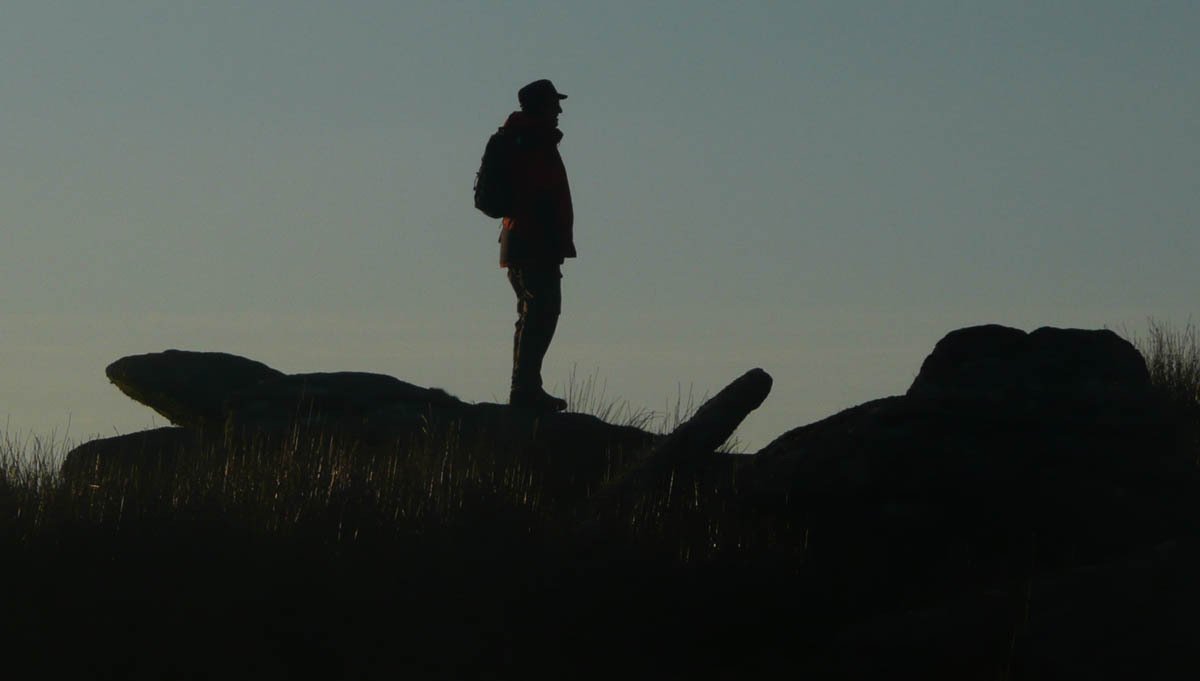
Another daft thing I got up to on Dartmoor was night hiking. I’ve been caught out once or twice in the Lakes and had to complete a walk as the sun was sinking, but never set out there to deliberately start a walk at dusk and complete all of it in the dark. There was a time when, even in the depths of winter, a friend and I would drive onto the moor after a day’s work in Exeter and wander around for a few hours, later appearing from out of the gloaming to surprise aghast locals in a pub. As well as being a pretty good test of navigation, night hiking introduces you to a totally different moor from the one you see in the daytime, a moor where distances are distorted and familiar views transformed, often magically.
I’ll long remember two incidents. Firstly, the night I walked straight into a bemused and shocked cow slumbering on Saddle Tor – she seemed shocked, but not as much as I was. Secondly, an enchanting snow covered, moonlit evening near South Hessary Tor, on the track leading from Princetown to Nuns Cross Farm, where we dispensed with torches for the entire walk and delighted in the twinkling lights of Plymouth and the shimmering, silver sea far beyond the city.
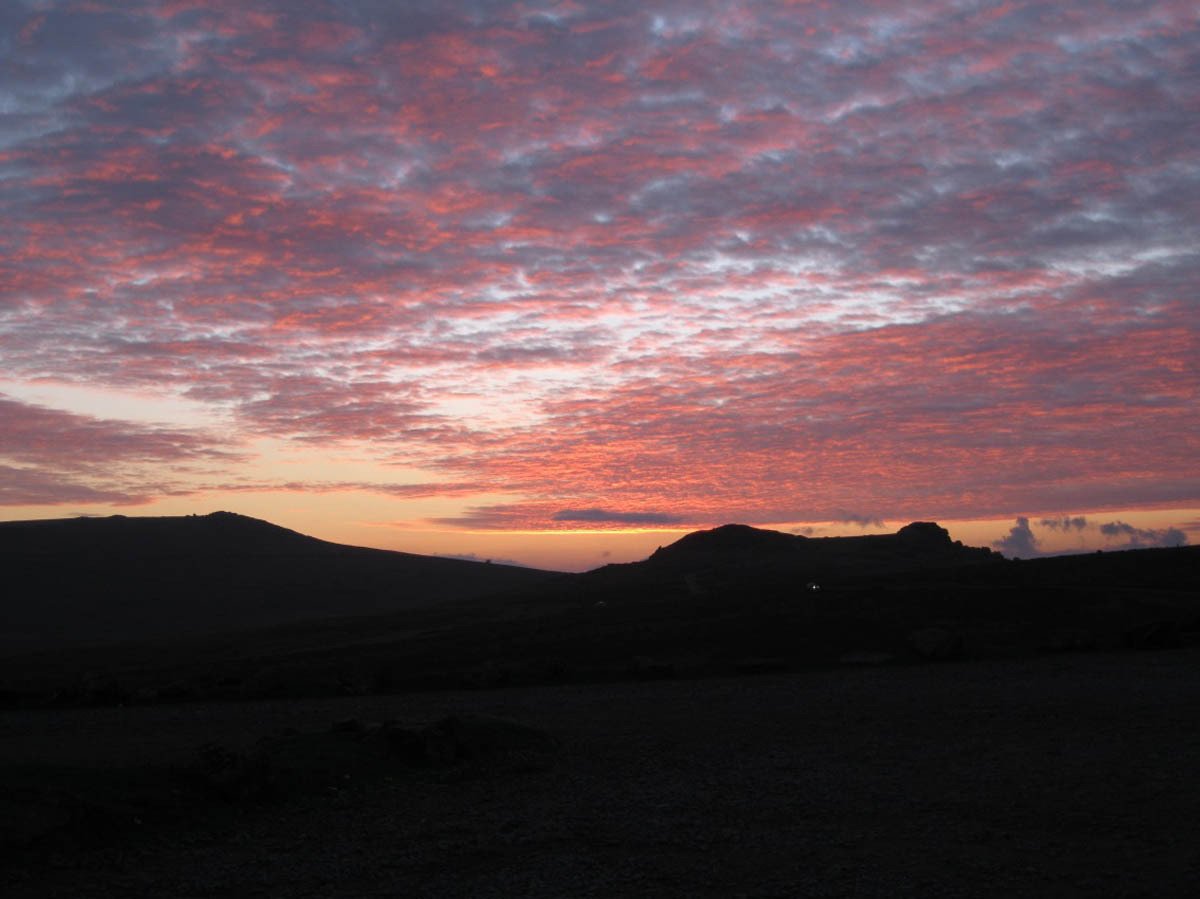
My idea of a perfect moorland autumn evening is to wander through the ancient, mystical and rather eerie Wistman’s Wood – one of the highest and oldest oak woodlands in the UK, nestling above the West Dart River just north of Two Bridges – as the sun sets and the wood and surrounding moor turn the colour of Dartmoor IPA. In such glorious, but spooky, surroundings you can well believe in the Hairy Hands.
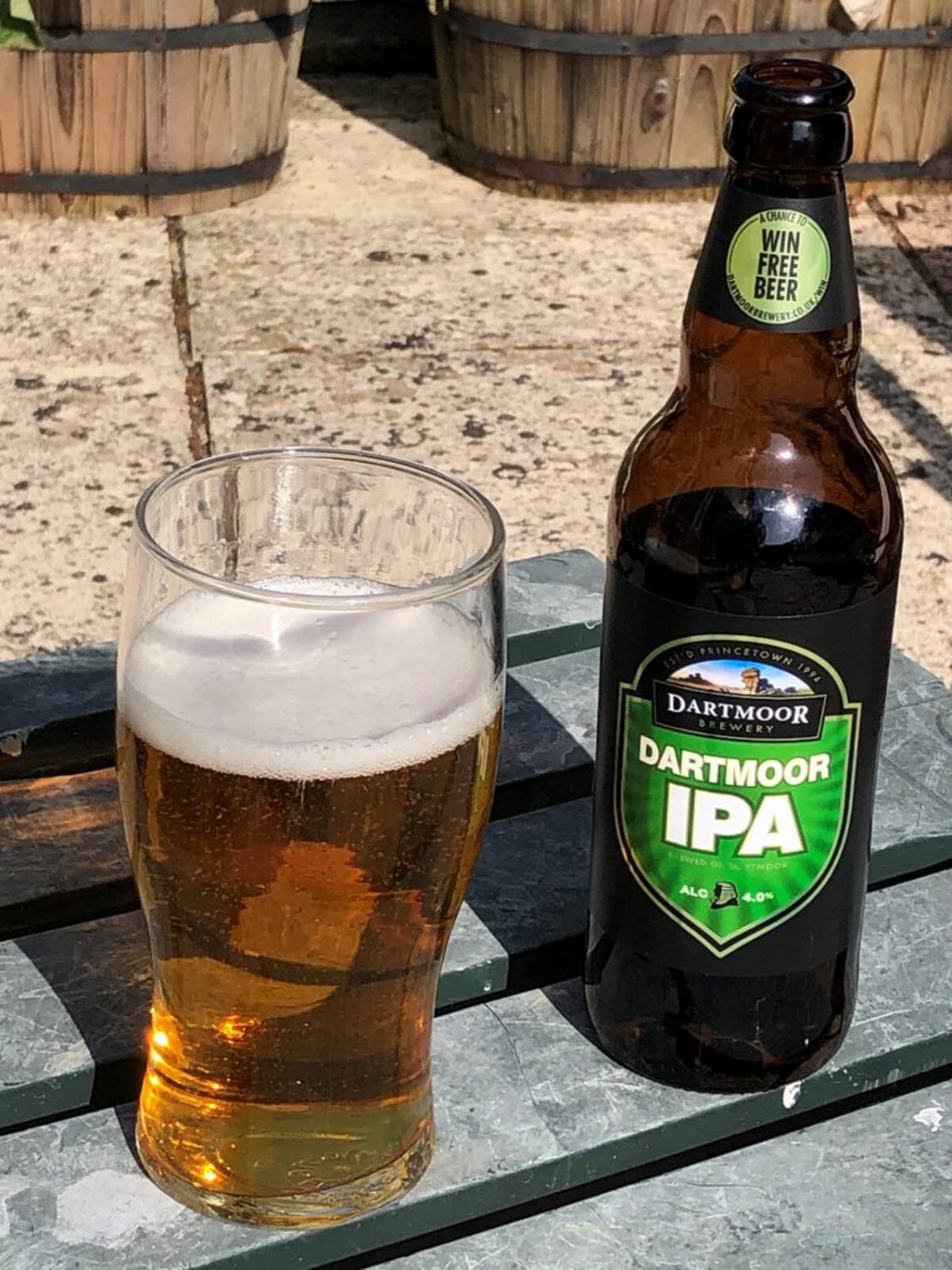
Keep on keeping on.
I’ve spent a large part of my walking-life wandering around Dartmoor and amassed a heap of happy memories. At 68 I’m still able to do most of the longer walks, albeit at a slower pace and with a few more aches and pains afterwards. I count myself very lucky – none of us know what’s round the corner, which is all the more reason to try and keep going and make the most of it while we can. Given a fair wind I’m hoping Dartmoor will be my companion for many more years to come. It is special, as another eminent visitor confirmed:
“I have never before, in my long and eclectic career, been gifted with such an abundance of natural beauty as I experienced filming ‘War Horse’ on Dartmoor.”
Stephen Spielberg
